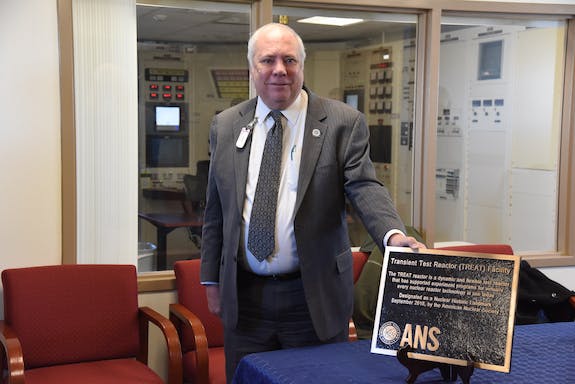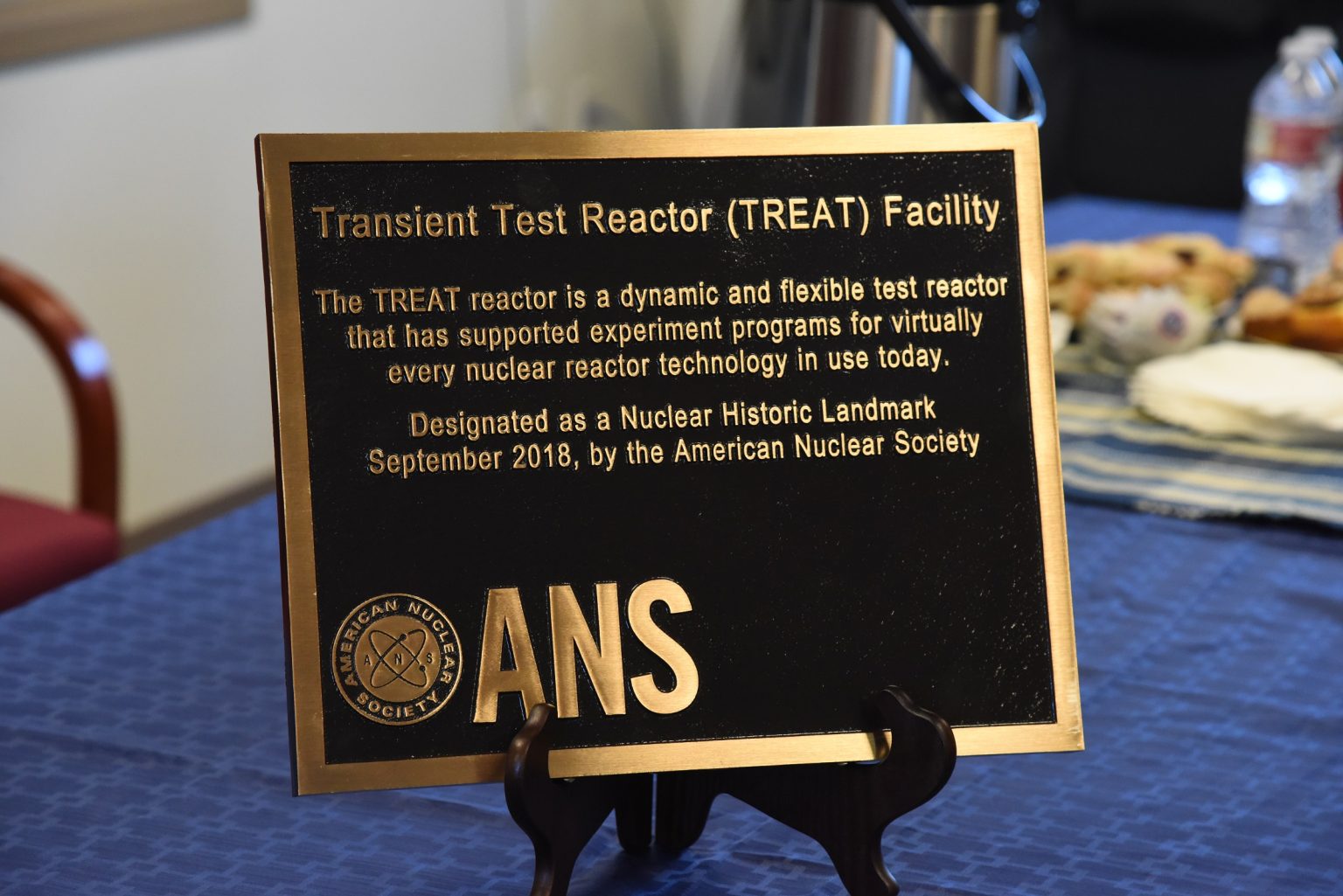The American Nuclear Society (ANS) has designated Idaho National Laboratory’s Transient Reactor Test Facility (TREAT) a Nuclear Historic Landmark, in recognition of work performed between 1959 and 1994 and with significant research still to come.
“Transient testing is an essential component of domestic and international efforts to develop robust, safe nuclear fuels, as well as to bring innovative reactor technologies to the market,” said ANS President John Kelly, who visited the TREAT control room at INL’s Materials & Fuels Complex on March 4 and presented a commemorative brass plaque.
Originally designed and built by Argonne National Laboratory, TREAT conducted more than 2,800 transient tests in 35 years. Unlike most of the 52 reactors built in Idaho, 48 of which were decommissioned and demolished, TREAT was put on operational standby and remained intact. The U.S. Department of Energy decided in 2014 to bring TREAT back online after determining that a domestic facility for transient testing was critical for future nuclear research in the U.S. The reactor restarted in the fall of 2017 and has been performing tests since then.
Transient testing involves producing extreme neutron levels that drive experimental nuclear fuel samples to simulate accident conditions in power reactors.
“As advanced technologies continue to be developed, TREAT will be vitally important in providing a unique test bed for advanced fuel concepts early in the development and licensing processes by emulating the reactor environment and coolant response for a variety of reactors including sodium, molten salt, and gas-cooled reactors, as well as validation of fuel response to updated design-basis accidents for new small modular reactor designs,” Kelly said.

ANS established the Nuclear Historic Landmark designation more than 32 years ago in recognition of facilities that have been instrumental in the advancement and implementation of nuclear technology. Other reactors at INL to receive the designation include Experimental Breeder Reactor-I, Experimental Breeder Reactor-II and the still operating Advanced Test Reactor.
As INL marks its 70th anniversary this year, both TREAT and ANS’s Idaho Section are celebrating their 60th anniversary. TREAT contains graphite from Chicago Pile 1, where the first nuclear chain reaction was created in 1942. Yet its design remains remarkably suited to testing next-generation technology. “As engineers, we like to say form follows function,” said David Chichester, an INL scientist. “It has a lot of the capabilities that you’d want if you’d built it from scratch right now.”
Because of its singular nature, TREAT is in demand and is, in fact, nearly booked for three years. A variety of experiments are scheduled, including testing from vendors developing accident-tolerant fuel and cladding for use in commercial reactors.
Because of the workload, TREAT is looking both for scientists and engineers who can design experiments, said Dan Wachs, DOE’s national technical lead for Transient Science. “We’re hiring as fast as we can find qualified people,” he said.





